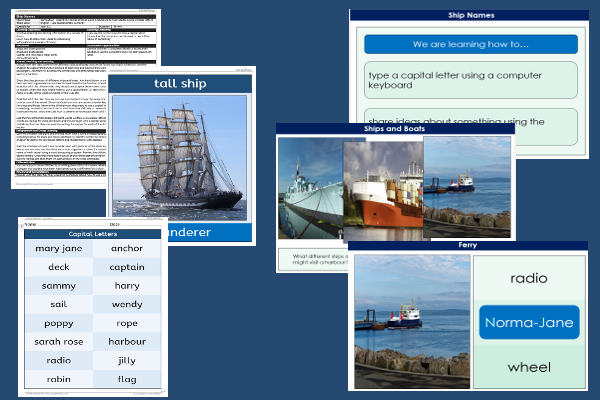Lesson Two – Ship Names

This computing teaching pack for Key Stage One gets the children to explore how to select and record the names of different ships moored in a harbour using a keyboard to type matching capital and lowercase letters.
The class can practise using the computer to correctly type the name for a ship or boat in a harbour so that the label can be read easily and understood by harbour users.
Download this teaching pack including a lesson plan, classroom activities and an interactive presentation to explore how to select and record the names of different ships moored in a harbour using a keyboard to type matching capital and lowercase letters
Activities in this teaching pack include display posters to describe how to make labels for the names of different ships using capital letters and a worksheet to practise changing lowercase letters into capitals to display the names of ships and boats moored in a harbour.
The interactive presentation can be used to explore and record the names of ships and boats using a keyboard to type matching capital and lowercase letters.
This lesson is part of a computing scheme of work to get the children to practise structuring and formatting different word processed documents to describe a range of ships and boats seen in a harbour. There are teaching activities for shared learning, differentiated worksheets to support independent learning and interactive presentations to introduce concepts and key skills.
-

Maths Measurement Assessment
Assess abilities in estimating, measuring and comparing a range of different measurements for length, mass and capacity
-

Family Life
Investigate and reflect on some of the special events and experiences that might happen in the life of a family
-

Final Sounds Word Guess
Practise playing some guessing and matching games to identify the spelling and meaning of words with different final sounds
-

Building Reports
Explore how to collect facts and information to work with when composing and presenting non-chronological reports about buildings that can be found in the local area
